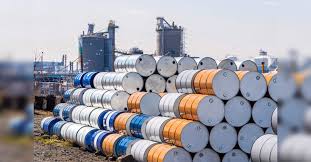Oil producers may be enjoying oil prices at $65 to $70. but these price levels are likely to encourage even more oversupply from U.S. shale. Fatih Birol. the Executive Director of the International Energy Agency (IEA). said at an industry event on Friday.
For most of 2017. the resurgence of U.S. crude oil production was capping price gains and offset part of the production cuts that OPEC and its Russia-led non-OPEC partners have been implementing since January last year. This year also started with the OPEC vs. shale tug-0f-war. although in the first two weeks of 2018. geopolitical risks and declining inventories trumped concerns over the rise in U.S. shale. and supported oil prices and sent Brent briefly breaking above $70 a barrel on Thursday.
U.S. shale is expected to continue to counteract OPEC production cuts this year. EIA’s latest Short-Term Energy Outlook (STEO) from earlier this week estimated that U.S. crude oil production averaged 9.3 million bpd in the whole of 2017. and 9.9 million bpd in December alone. This year. U.S. crude oil production is seen averaging 10.3 million bpd in 2018. beating a record dating back to 1970. For 2019. EIA expects U.S. production to increase to an average of 10.8 million bpd. and to surpass 11 million bpd in November next year.
The Paris-based IEA. for its part. said in its latest Oil Market Report from December that “On considering the final component in the balance – non-OPEC production – we see that 2018 might not be quite so happy for OPEC producers.“
The IEA warned that mostly due to U.S. shale. total supply growth could exceed demand growth.
Oil prices are currently at levels at which U.S. production could substantially increase. According to the Q4 Dallas Fed Energy Survey published at end-December. 42 percent of executives at 132 oil and gas firms expect the U.S. oil rig count to substantially increase if WTI prices are between $61 and $65 a barrel.
At 08:53 a.m. EST on Friday. WTI Crude was down 0.44 percent at $63.26. and Brent Crude was down 0.14 percent at $68.89. as investors were awaiting U.S. President Trump’s decision on Iran and Baker Hughes rig count data.
 Iran Energy News Oil, Gas, Petrochemical and Energy Field Specialized Channel
Iran Energy News Oil, Gas, Petrochemical and Energy Field Specialized Channel




